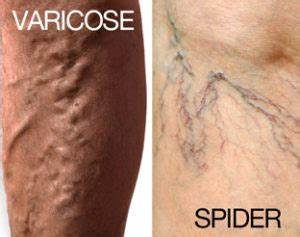
What are sclerosing agents?
- Sclerosing agents are irritating substance used in sclerotherapy of varicose veins and uncomplicated piles. They are substances that causes marked tissue irritation or thrombosis with subsequent local inflammation and tissue necrosis.
- Sclerosing agents have been used for treating varicose and spider veins from long time. The first use was reported in 1840. Sclerotherapy is the use of chemical, biological or physical properties of a substance to disrupt target tissue.
- They are also available as foam sclerotherapy which involves mixing of sclerosing agents with air to create micro foam. The target vein is then identified by ultrasound and microfoam sclerosant is injected.
What are varicose veins and spider veins?

- Varicose veins are large, raised and swollen blood vessels that twist and turn. They usually develop in leg and are easily visible. Normally, the vein supply blood from different parts of body to heart. The veins of legs should work against gravity to supply blood from legs to heart. When there are weakened valves within the veins, the blood gets pooled in veins instead of circulating to heart. This leads to formation of varicose veins.

- Spider veins are smaller, red purple and blue vessels which are twisted and turned. They usually occur on leg, chest and face and are easily visible.
How sclerosing agents work?
- When sclerosing agents are injected directly into vein, they irritate lining of blood vessels. This causes collapsing of blood vessels and clotting of blood. Hence, they cause vein to scar forcing the rerouting of blood flow though healthier blood vessels. As the time passes, the vein scar fades away.
Commonly used sclerosing agents
Ethanol

Figure- Ethanol
- It acts by causing denaturation of endothelial proteins which causes coagulation and subsequent thrombosis. It also induces vasospasm. Its effect is observed within seconds of injection and lasts for several days. Its effect depends on its concentration, injection rate and time of exposure.
- Use of ethanol as sclerosant has some side effects too. It can cause damage to surrounding tissue including nerves, skin and mucosa owing to its penetrative property. Patients may experience procedural pain. If used in high dose (more than 1 ml/lg or of total volume is more than 60 ml), effects like CNS depression, hemolysis and cardiac arrest may occur. Its use is limited due to high complication rate and morbidity.
Ethanolamine oleate

Figure – Structure of ethanolamine oleate
- It is a salt of fatty acid with thrombogenic properties and is available in 2 ml ampoules and prepared in aqueous solution of 50 mg/ml. It induces sclerosis by causing endothelia damage which results in thrombosis and fibrin product depositions. The oleate component helps to exert further inflammatory response.
- It is used for sclerosis of gastroesophageal varices, venous malformations, sclerotherapy of cyst and seromas.
- It is advantageous compared to ethanol due to less severe and less frequent side effects due to its less penetrating properties. Hence, there is less risk to adjacent nerves, skin and mucosa. It can cause frequent perivascular infiltration when used endoscopically. Other risks include renal failure, anaphylaxis, pulmonary edema.
Sodium tetradecyl sulphate

Figure- Structure of sodium tetradecyl sulphate
- It is an anionic detergent and is used as intravascular sclerosing agents. Chemically, it is 7-ethyl-2-methyl-4-undecanyl sulphate salt. It is the only FDA approved detergent sclerosant till date and is approved by FDA for superficial varicose veins. It is also used in sclerosis of gonadal veins in treatment of varicoceles and pelvic congestion syndrome and sclerotherapy of venous malformation.
- As it is detergent based molecule, it acts on lipid molecules in cell of vein and cause destruction of internal lining of vein leading to sclerosis. It is commercially available as 1% and 3 % solution.
- Its complications include extravasation at or near site of injection, scrotal swelling and pain.
Some other sclerosing agents which are non-FDA approved includes polidecanol, bleomycin, sclerodex etc.
References
- (PDF) Pharmacology of Sclerotherapy (researchgate.net)
- https://www.webmd.com/skin-problems-and-treatments/sclerotherapy#1
- https://www.webmd.com/skin-problems-and-treatments/guide/varicose-spider-veins#1
- Venous Ulcers 2007, Pages 173-184.